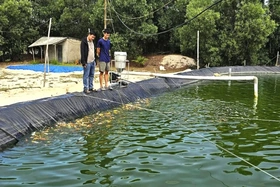4bunSXfhu69ETcOBVFThu53hu61Rw63DjVVNw4nhu63FqcOiw4HDk+G7r1vDgcOT4buv4oCT4buvIsOJT1TDgVfDgU/hu69EU8OTVFQtQ8OTU8SQw4lT4buvVVPDgcSQw4nhu696w5NPw4nhu6/DiU7DiVNIw4lU4buvw4FU4buvT8OJWOG7r0hTw5NYVUnigJlU4buvxJBTw41Xw41PSOG7r0fDk1NEw4nhu6cvSXfFqeG7p1Hhu69ETcOBVFThu53hu61R4bqhw4nDgcSQ4butxanhuqNP4buvVUnDieG7r0TDk09Vw4lZVeG7r8OTR+G7r0TDk09Pw4lEVcONV8ONVcOd4buvw4FPxJDhu69Ew5PDk1HDiVPDgVXDjVfDieG7r8SQw4lXw4lNw5NRTsOJT1Xhu69Dw4lEw5NOw41PSOG7r8OB4buvRMOTTk7Dk0/hu69VU8OJT8SQ4buvw41P4buvVUnDieG7r1PDiUjDjcOTT3Thu6/hu43DjcOJVU/DgU7hu6/DgU/EkOG7r8Oiw4HDk1Thu6/DgVPDieG7r1RVU8ONV8ONT0jhu69Vw5Phu69RU8OTUcOTVMOJ4buvRMOTT0/DiURVw41Xw41Vw53hu6/DjU/DjVXDjcOBVcONV8OJVHThu69EU8OJw4FVw41PSOG7r0/DiVjhu6/DjU5Rw4lVw5pU4buvR8OTU+G7r0PDjU3DgVXDiVPDgU3hu6/DiUTDk0/Dk07DjUThu69Ew5PDk1HDiVPDgVXDjcOTT3Xhu6/DrUnDieG7r8OJVFXDgUNNw41USU7DiU9V4buvw4FPxJDhu6/EkMOJV8OJTcOTUU7DiU9V4buvw5NH4buvVUnDieG7r8Oiw4HDk+G7r1vDgcOTLSLDiU9Uw4FXw4FP4buvXVPDk1RULVvDk1PEkMOJU+G7rzBEw5NPw5NOw41E4buvw61Tw4HEkMOJ4buvWsOTT8OJ4buvScOTTcSQ4buvVFVTw4FVw4lIw41E4buvVMONSE/DjUfDjUTDgU9Ew4l04buvUVPDk1fDjcSQw41PSOG7r0dTw4lUSeG7r07Dk07DiU9Vw5pO4buvR8OTU+G7r+G7jcONw4lVT8OBTi3DosOBw5NU4buvRMOTw5NRw4lTw4FVw43Dk0914bunL1HFqeG7p1Hhu69ETcOBVFThu53hu61RW8OTxJDDneG7rcWp4bunVFVTw5NPSMWpaVVTw4FVw4lIw41E4buvVMONSE/DjUfDjUTDgU9Ew4nhu6cvVFVTw5NPSMWp4bunL1HFqeG7p1Hhu69ETcOBVFThu53hu61RW8OTxJDDneG7rcWpw61Jw4nhu69Tw4lUw4nDgVNESeG7r8OBT8SQ4buvxJDDiVfDiU3Dk1FOw4lPVeG7r8OTR+G7r1VJw4nhu6/DosOBw5Phu69bw4HDky0iw4lPVMOBV8OBT+G7r11Tw5NUVC1bw5NTxJDDiVPhu68wRMOTT8OTTsONROG7r8OtU8OBxJDDieG7r1rDk0/DieG7r0nDgVfDieG7r0PDicOJT+G7r8OTR+G7r1HDgVNVw41Ew5pNw4FT4buvw41PVcOJU8OJVFXhu69Vw5Phu69VScOJ4buvTcOJw4HEkMOJU1RJw41R4buvw5NH4buvVUnDieG7r+G7jcONw4lVT8OBTsOJVMOJ4buvw4FPxJDhu6/DosOBw5NVw43DgU/hu69mw4FTVcONw4lUdOG7r2lVw4FVw4lUdOG7r8OBVOG7r1jDiU1N4buvw4FU4buvVUnDieG7r8OBw5pVScOTU8ONVcONw4lU4buvw5NH4buvZ8Oaw4FPSOG7r8OtU8ON4buvZlPDk1fDjU9Ew4nhu6/DgU/EkOG7r2nDgVfDgU9Pw4FMScOJVeG7r2ZTw5NXw41PRMOJdeG7r2nDjU9Ew4nhu694dnfhu7N04buvZ8Oaw4FPSOG7r8OtU8ON4buvZlPDk1fDjU9Ew4nhu69Jw4FU4buvw4FEVcONV8OJTcOd4buvUVPDk1HDk1TDicSQ4buvVcOT4buvVUnDieG7r0TDiU9VU8OBTeG7r0jDk1fDiVNPTsOJT1Xhu69Vw5Phu69UVcOaxJDDneG7r8OBT8SQ4buvxJDDiVfDiU3Dk1Hhu69VScONVOG7r1FTw5NLw4lEVXXhu68iw5NEw5pOw4lPVeG7r+G6p8OTdeG7r3nhu7Mtw61bL+G7jWbDreG7j+G7r8SQw4FVw4nEkOG7ryNRU8ONTeG7r3h3dOG7r3h2d+G7t3Thu69HU8OTTuG7r1VJw4nhu6/huq1HR8ONRMOJ4buvw5NH4buvVUnDieG7r13DiU9VU8OBTeG7r13Dk05Ow41VVcOJw4nhu6/DgU9Pw5PDmk9Ew4nEkOG7r1VJw4nhu69Tw4lUw5pNVVThu6/Dk0fhu69VScOJ4buvWMOTU0zDjU9I4buvV8ONVMONVeG7r8OTR+G7r8Ogw4lPw4lTw4FN4buvacOJRFPDiVXDgVPDneG7r+G6p0jDmsOdw4lP4buvZknDmuG7r8OtU8OTT0jhu69Vw5Phu69nw5rDgU9I4buvw61Tw43hu69mU8OTV8ONT0TDiXThu6/DgUhTw4nDicONT0jhu69Vw5Phu6/hu61Uw4lNw4lEVeG7r2fDmsOBT0jhu6/DrVPDjeG7r2ZTw5NXw41PRMOJ4buvw4FU4buvw4Hhu69Hw5NEw4FN4buvUcOTw41PVeG7r0fDk1Phu69UVcOaxJDDncONT0jhu6/DgU/EkOG7r1FTw5NRw5NUw41PSOG7r1XDk+G7r1VJw4nhu69mw5NNw41VQ8OaU8OTdOG7r1VJw4nhu6/DoMOTV8OJU09Ow4lPVVThu6/Dk0fhu69Dw5NVSeG7r+G7jcONw4lVT8OBTuG7r8OBT8SQ4buvw6LDgcOTVOG7r1XDk+G7r1HDjU3Dk1Xhu69Uw5NOw4nhu6/Dk8OaVVRVw4FPxJDDjU9I4buvTsOJREnDgU/DjVROVOG7r8OBT8SQ4buvUcOTTcONRMONw4lU4buvw41P4buvVUnDieG7r8Oiw4HDk+G7r1vDgcOT4buvXVPDk1RULVvDk1PEkMOJU+G7rzBEw5NPw5NOw41E4buvw61Tw4HEkMOJ4buvWsOTT8OJ4buvw4FPxJDhu69VScOJ4buvIsOJT1TDgVfDgU/hu69bw5NTxJDDiVPhu6/DrVPDgcSQw4nhu69aw5NPw4l14but4bunL1HFqeG7p1Hhu69ETcOBVFThu53hu61RW8OTxJDDneG7rcWpIsOTRMOaTsOJT1Xhu6/huqfDk3Xhu6/hu7VB4bu34bu3L+G7jWZdZi1n4bqhImbhu6/EkMOBVcOJxJDhu68jw5pIw5pUVeG7r+G7t3Thu694dndBdOG7r0dTw5NO4buvVUnDieG7r8Ogw5NXw4lTT07DiU9V4buv4bqtR0fDjUTDieG7r8OTR+G7r+G7jcONw4lVT8OBTuG7r8OBVFTDjUhPw4nEkOG7r1VJw4nhu6/huqXDjU/DjVRVU8Od4buvw5NH4buvZk3DgU9Pw41PSOG7r8OBT8SQ4buv4bqjT1fDiVRVTsOJT1V04buvw41P4buvRMOTw5NTxJDDjU/DgVXDjcOTT+G7r1jDjVVJ4buvVUnDieG7r+G6pcONT8ONVFVTw53hu6/Dk0fhu6/DocOTU8OJw41IT+G7ryNHR8OBw41TVOG7r8OBT8SQ4buvVUnDieG7r2bDicOTUU3DieKAmVThu69dw5NOTsONVVXDicOJ4buvw5NH4buvZ8Oaw4FPSOG7r8OtU8ON4buvZlPDk1fDjU9Ew4l04buvVcOT4buvxJDDiVfDiU3Dk1Hhu69VScOJ4buvw4FHw5NTw4lOw4lPVcONw5NPw4nEkOG7r8OJRMOTT8OTTsONROG7r3rDk0/DiXXhu69ow4lUw5NNw5pVw43Dk0/hu6/huqfDk3Xhu6944bu1LeG6p2cvw63hu4/hu6/EkMOBVcOJxJDhu6/huqfDk1fDiU5Dw4lT4buveXThu694dnh4dOG7r8OTR+G7r1VJw4nhu69mw5NNw41VQ8OaU8OT4buvRE3DicOBU03DneG7r1RVw4FVw4nEkOG7r1VJw4nhu6/EkMONU8OJRFXDjcOTT+G7r8OTR+G7r+G7rWZTw5NOw5NVw41PSOG7r8OJRMOTT8OTTsONROG7r0TDk8OTUcOJU8OBVcONw5NP4buvVUlTw5PDmkhJ4buvQ8OTU8SQw4lT4buvSMOBVcOJVOG7r8ONT+G7r1VJw4nhu69Tw4lIw43Dk0/hu69Nw41PTMOJxJDhu69Vw5Phu69VScOJ4buvMMOBVFUt4buPw4lUVeG7rzBEw5NPw5NOw41E4buvXcOTU1PDjcSQw5NTdeG7reG7py9Rxanhu6dR4buvRE3DgVRU4bud4butUVvDk8SQw53hu63FqeG7p8ONTkjhu69ETcOBVFThu53hu63DjV3DiU9Vw4lT4but4buvVFNE4bud4butSVVVUVRyLy9EdUPDgcOTUsOaw4FPSFVTw411V08vxJDDiVRMVcOTUS9Pw4lYVC94w713eS93d8O9xJDhu7V34bu1dsO9w73DvVXhu7d54bu54bu5TeG7sy3DjU5ILXbhu7Phu7lBdVjDiUNR4but4buvw4FNVeG7neG7rcOiw4HDk+G7r1vDgcOT4buv4oCT4buvIsOJT1TDgVfDgU/hu69EU8OTVFQtQ8OTU8SQw4lT4buvVVPDgcSQw4nhu696w5NPw4nhu6/DiU7DiVNIw4lU4buvw4FU4buvT8OJWOG7r0hTw5NYVUnigJlU4buvxJBTw41Xw41PSOG7r0fDk1NEw4nhu63hu68vxanhu6cvUcWp4bunUeG7r0RNw4FUVOG7neG7rVFdw4FRVcONw5NP4butxanDrUnDieG7r1FNw4FPT8ONT0jhu6/Dk0fhu69VScOJ4buv4bqzw5PDjU9V4buvXVPDk1RULUPDk1PEkMOJU+G7r1VTw4HEkMOJ4buvesOTT8OJdeG7py9Rxanhu6dR4buvRE3DgVRU4bud4butUVvDk8SQw53hu63FqWnDmkNUw4lSw5rDiU9VTcOddOG7ryLDk0TDmk7DiU9V4buv4bqnw5N14buvQUF5L+G7jWZdZi1n4bqhZ8Ot4buvxJDDgVXDicSQ4buv4bqlw4FTREnhu695dnThu694dnh5dOG7r0dTw5NO4buvVUnDieG7r8Ogw5NXw4lTT07DiU9V4buv4bqtR0fDjUTDieG7r8OBT0/Dk8OaT0TDicSQ4buvVUnDieG7r8SQw4lEw41Uw43Dk0/hu69Vw5Phu69Vw4FUTOG7r2fDmsOBT0jhu6/DrVPDjeG7r2ZTw5NXw41PRMOJ4buvWMONVUnhu6/hu61Ew5PDk1PEkMONT8OBVcONT0jhu69Yw41VSeG7r1PDiU3DiVfDgU9V4buvw4FIw4lPRMONw4lU4buvR1PDk07hu6/hu43DjcOJVU/DgU7hu6/DgU/EkOG7r8Oiw4HDk1Thu69Vw5Phu69Tw4lRw5NTVeG7r1XDk+G7r1VJw4nhu69Ew5NOUcOJVcOJT1Xhu6/DgcOaVUnDk1PDjVXDjcOJVOG7r8OTR+G7r0PDk1VJ4buvRMOTw5pPVVPDjcOJVOG7r0fDk1Phu69Ew5NPVMONxJDDiVPDgVXDjcOTT3Thu69UVcOaxJDDncONT0jhu6/DgU/EkOG7r1HDjU3Dk1XDjU9I4buvVUnDieG7r07Dk8SQw4lN4buvw5NH4buvw4Hhu69EU8OTVFQtQ8OTU8SQw4lT4buvw4lEw5NPw5NOw41E4buvVVPDgcSQw4nhu696w5NPw4nhu6/DgU3Dk09I4buvVUnDieG7rzDDgVRVLeG7j8OJVFXhu68wRMOTT8OTTsONROG7r13Dk1NTw43EkMOTU+G7r8ONT+G7r8OBRETDk1PEkMOBT0TDieG7r1jDjVVJ4buvUVPDiVREU8ONQ8OJxJDhu69RU8OTRMOJxJDDmlPDiVR14but4bunL1HFqeG7p1Hhu69ETcOBVFThu53hu61RW8OTxJDDneG7rcWpaMOJRMOTSE/DjXrDjU9I4buvVUnDieG7r8ONTlHDk1NVw4FPRMOJ4buvw5NH4buvVUnDieG7r8OBQ8OTV8OJLU7DiU9Vw43Dk0/DicSQ4buvXVPDk1RULVvDk1PEkMOJU+G7rzBEw5NPw5NOw41E4buvw61Tw4HEkMOJ4buvWsOTT8OJdOG7r8Oiw4HDk1Thu6/DgU/EkOG7r2nDgVfDgU9Pw4FMScOJVeG7r2ZTw5NXw41PRMOJ4buvw4FNVMOT4buvWMONVEnhu69Vw5Phu69Ew5PDk1HDiVPDgVXDieG7r1jDjVVJ4buv4buNw43DiVVPw4FO4buvw41P4buvVFXDmsSQw53DjU9I4buvw4FPxJDhu6/EkMOJV8OJTcOTUcONT0jhu69VScONVOG7r8OJRMOTT8OTTsONROG7r1VTw4HEkMOJ4buvesOTT8OJdeG7ryLDmlPDjU9I4buvVUnDieG7r1fDjVTDjVXhu6/Dk0fhu69VScOJ4buvZ8Oaw4FPSOG7r8OtU8ON4buvZlPDk1fDjU9Ew43DgU3hu69Nw4nDgcSQw4lTVEnDjVHhu6/EkMOJTcOJSMOBVcONw5NP4buvVcOT4buvacOBV8OBT0/DgUxJw4lV4buvZlPDk1fDjU9Ew4nhu6/DucOhw4lDU8Oaw4FTw53hu6934bu3LXdBdOG7r3h2eHjhu6V04buv4butW8OTVUnhu69Uw43EkMOJVOG7r8OBSFPDicOJxJDhu69Vw5Phu69Ew5PDk1PEkMONT8OBVcOJ4buvw41P4buvVFXDmsSQw53DjU9I4buvVFHDiUTDjcOBTeG7r07DiURJw4FPw41UTlThu6/DgU/EkOG7r1HDk03DjUTDjcOJVOG7r1XDk+G7r0PDieG7r1TDmkNOw41VVcOJxJDhu69Vw5Phu69VScOJ4buvZsOTTcONVUPDmlPDk+G7r8OBT8SQ4buvVUnDieG7r8Ogw5NXw4lTT07DiU9VVOG7r8OTR+G7r0PDk1VJ4buvRMOTw5pPVVPDjcOJVOG7r0fDk1Phu69Rw41Nw5NVw41PSOG7r1VJw4nhu6/DiVRVw4FDTcONVElOw4lPVeG7r8OTR+G7r1VJw4nhu6/DosOBw5Phu69bw4HDky0iw4lPVMOBV8OBT+G7r11Tw5NUVC1bw5NTxJDDiVPhu68wRMOTT8OTTsONROG7r8OtU8OBxJDDieG7r1rDk0/DiXXhu63hu6cvUcWp4bunUeG7r0RNw4FUVOG7neG7rVFbw5PEkMOd4butxanDrUnDieG7r0TDk09UVVPDmkRVw43Dk0/hu6/DgU/EkOG7r8SQw4lXw4lNw5NRTsOJT1Xhu6/Dk0fhu69VScOJ4buvw6LDgcOT4buvW8OBw5MtIsOJT1TDgVfDgU/hu69dU8OTVFQtW8OTU8SQw4lT4buvMETDk0/Dk07DjUThu6/DrVPDgcSQw4nhu69aw5NPw4nhu69Jw5NNxJDhu69UVVPDgVXDiUjDjUThu69Uw41IT8ONR8ONRMOBT0TDieG7r8ONT+G7r1FTw5NOw5NVw41PSOG7r+G7jcONw4lVT8OBTi3DosOBw5NU4buvw4lEw5NPw5NOw41E4buvRMOTT0/DiURVw41Xw41Vw5104buvRMOTT1VTw41Dw5pVw41PSOG7r1TDjUhPw41Hw41Ew4FPVU3DneG7r1XDk+G7r8OJT0nDgU9Ew41PSOG7r1VJw4nhu69HU8OBVcOJU0/DgU3hu69Ew5PDk1HDiVPDgVXDjcOTT+G7r0PDiVVYw4nDiU/hu6/hu43DjcOJVU/DgU7hu6/DgU/EkOG7r8Oiw4HDk1R04buvw4FPxJDhu6/DiU9Uw5pTw41PSOG7r8SQw4lHw4lPVMOJ4buvw4FPxJDhu69Uw4lEw5pTw41Vw53hu69Hw5NT4buvQ8OTVUnhu69Ew5PDmk9VU8ONw4lUdeG7r8OtScOJ4buvRMOTT1RVU8OaRFXDjcOTT+G7r8OBT8SQ4buvxJDDiVfDiU3Dk1FOw4lPVeG7r8OTR+G7r1VJw41U4buvw4lEw5NPw5NOw41E4buvesOTT8OJ4buvScOBV8OJ4buvQ8OJRMOTTsOJ4buvw4Hhu69Pw4lEw4lUVMOBU8Od4buvw4FPxJDhu6/DmlNIw4lPVeG7r1XDgVRM4buvw41P4buvVUnDieG7r0TDk09Vw4lZVeG7r1hJw4lTw4nhu69Pw4lY4buvT8OTVcOBQ03DieG7r0fDgURVw5NTVOG7r8OBU8OJ4buvw4lOw4lTSMONT0jhu6/DjU/hu69Tw4lIw43Dk0/DgU3hu69Ew5PDk1HDiVPDgVXDjcOTT+G7r8OBT8SQ4buvRMOTT0/DiURVw41Xw41Vw5104buvw4FU4buvR8OTTU3Dk1hUcuG7py9Rxanhu6dR4buvRE3DgVRU4bud4butUVvDk8SQw53hu63FqcOhw41TVFVNw5104buvw4lEw5NPw5NOw41E4buvRMOTT0/DiURVw41Xw41Vw5104buvWMONVUnhu6/DgeG7r0fDk0TDmlThu6/Dk0/hu69VU8OBT1RRw5NTVcOBVcONw5NP4buvw41PR1PDgVRVU8OaRFXDmlPDieG7r8OBT8SQ4buvVVPDgcSQw4nhu69Ew5NPT8OJRFXDjVfDjVXDnXThu6/DjVThu69Dw4lEw5NOw41PSOG7r8OB4buvTsOBS8OTU+G7r1VTw4lPxJDhu6/DgU7Dk09I4buvRMOTw5pPVVPDjcOJVOG7r8ONT+G7r1VJw4nhu69Tw4lIw43Dk0914buvW8OJVVjDicOJT+G7r11Jw41Pw4Hhu6/DgU/EkOG7r8Oiw4HDk1R04buvXUnDjU/DgeG7r8OBT8SQ4buv4buNw43DiVVPw4FOdOG7r8OBT8SQ4buvw5NVScOJU+G7r0TDk8OaT1VTw43DiVThu6/DjU/hu69VScOJ4buvU8OJSMONw5NPdOG7r07Dk8SQw4lNVOG7r8OTR+G7r0RTw5NUVC1Dw5NTxJDDiVPhu6/DiUTDk0/Dk07DjUThu69Ew5PDk1HDiVPDgVXDjcOTT+G7r3rDk0/DiVThu69Jw4FXw4nhu69Dw4nDiU/hu6/DjU5RTcOJTsOJT1XDicSQc+G7r8OJWVHDiVPDjU7DiU9Vw41PSOG7r1jDjVVJ4buvT8OJWOG7r0TDmlRVw5NOVOG7r0RNw4nDgVPDgU9Ew4nhu69Ow5PEkMOJTVR04buvVE7DgVNV4buvQ8OTU8SQw4lT4buvSMOBVcOJVHThu6/DiVVEdeG7r8OtScOJVMOJ4buvw4FTw4nhu69Iw5PDk8SQ4buvTsOTxJDDiU1U4buvR8OTU+G7r+G7jcONw4lVT8OBTuG7r8OBT8SQ4buvw6LDgcOTVOG7r1XDk+G7r1PDiUfDiVPhu69Vw5N14bunL1HFqeG7p1Hhu69ETcOBVFThu53hu61RW8OTxJDDneG7rcWpacOJRMOTT8SQTcOddOG7r1VJw4nhu69dScONT8OBLcOiw4HDk1Thu69Tw4HDjU1Yw4HDneG7r0nDgVThu6/Dk0dHw41Ew43DgU1Nw53hu69Ew5NOTsOJT0TDicSQ4buvw5NRw4lTw4FVw43Dk09UdOG7r1TDjUhPw41Hw41Ew4FPVU3DneG7r8ONTlHDgURVw41PSOG7r1PDiUjDjcOTT8OBTeG7r0TDk09Pw4lEVcONV8ONVcOddeG7r8OtScONVOG7r1FTw5NOw5NVw4lU4buvVcOTw5pTw41UTuG7r8SQw4lXw4lNw5NRTsOJT1Xhu6/DgU/EkOG7r1fDgVPDjcOTw5pU4buvw41PxJDDmlRVU8ONw4lUdOG7r8OBVOG7r1jDiU1N4buvw4FU4buvw4lEw5NPw5NOw41E4buvw4FPxJDhu69VU8OBxJDDieG7r8OJWURJw4FPSMOJVOG7r0fDk1Phu6/DosOBw5NU4buvw4FPxJDhu6/Dk1VJw4lT4buvRMOTw5pPVVPDjcOJVOG7r8ONT+G7r1VJw4nhu69Tw4lIw43Dk0904buvRFPDicOBVcONT0jhu6/Dk1FRw5NTVcOaT8ONVcONw4lU4buvR8OTU+G7r0fDk1PDicONSE/hu6/DiU9Vw4lTUVPDjVTDiVThu69Vw5Phu6/DjU9Xw4lUVeG7r8ONT+G7r8Oiw4HDk1Thu6/DgU/EkOG7r8ONT0RTw4nDgVTDjU9I4buvVUnDieG7r8SQw4lOw4FPxJDhu69Hw5NT4buvSMOTw5PEkFThu69Rw4FUVMONT0jhu69VSVPDk8OaSEnhu69VScOJ4buvw6LDgcOT4buvW8OBw5MtIsOJT1TDgVfDgU/hu69bw5NTxJDDiVPhu6/DoMOBVcOJdeG7py9Rxanhu6dR4buvRE3DgVRU4bud4butUVvDk8SQw53hu63FqcOtScONU8SQTcOddOG7r+G7jcONw4lVT8OBTuG7r8OBT8SQ4buvw6LDgcOTVOG7r8OBU8OJ4buvw41PVcOJT1TDjUfDncONT0jhu6/DiUTDk0/Dk07DjUThu6/EkMOJV8OJTcOTUU7DiU9V4buvw4FPxJDhu69Ew5NPT8OJRFXDjVfDjVXDnXXhu6/hu43DjcOJVU/DgU7hu69Jw4FU4buvUU3DgU9Pw4nEkOG7r8OBT8SQ4buvxJDDiVfDiU3Dk1HDicSQ4buvT8OaTsOJU8OTw5pU4buvVVPDgU9UUcOTU1XDgVXDjcOTT+G7r8ONT0dTw4FUVVPDmkRVw5pTw4nhu69RU8OTS8OJRFVU4buvVcOT4buvUVPDk07Dk1XDieG7rzDDgVRVLeG7j8OJVFXhu69Ew5NPT8OJRFXDjVfDjVXDneG7r8OBT8SQ4buvRMOTT0/DiURVw41Xw41Vw53hu69Yw41VSeG7r8Oiw4HDk1R14buvaMOJVMOTTcOaVcONw5NP4buv4bqnw5N14buveOG7tS3huqdnL8Ot4buP4buvxJDDgVXDicSQ4buv4bqnw5NXw4lOQ8OJU+G7r3l04buveHZ4eHThu6/Dk0fhu69VScOJ4buvZsOTTcONVUPDmlPDk+G7r8ONxJDDiU9Vw41Hw43DiVThu69Dw5rDjU3EkMONT0jhu6/DgeG7r1TDnU9ESVPDk0/DjXrDicSQdOG7r07Dk8SQw4lTT+G7r1VTw4FPVFHDk1NVw4FVw43Dk0/hu6/DjU9HU8OBVFVTw5pEVcOaU8OJ4buvVMOdVFXDiU504buvR8OBRMONTcONVcOBVcONT0jhu6/DjU9Vw4lTT8OBTeG7r0TDk09Pw4lEVcONV8ONVcOd4buvw41P4buvVUnDieG7r+G6p8OTU1VJ4buvXcOJT1VTw4FN4buvw4FPxJDhu69dw4lPVVPDgU3hu69dw5PDgVRVw4FN4buvU8OJSMONw5NPVHThu6/DgU/EkOG7r8ONT1XDiVMtU8OJSMONw5NPw4FN4buvRMOTT0/DiURVw41Xw41Vw51z4buvRMOBTU3DjU9I4buvR8OTU+G7r8OBT8SQ4buvUVPDk07Dk1XDjU9I4buvw41PV8OJVFVOw4lPVeG7r8ONT+G7r1VJw4nhu6/huqHDgU/Dk8ONLeG7jcONw4lPVcONw4FPw4nhu6/DiVlRU8OJVFRYw4HDnXThu69VScOJ4buvXcOBTuG7r8Oiw5Mtw6LDgcOT4buvW8OBw5Phu6/DiVlRU8OJVFRYw4HDnXPhu6/DjU9Xw4lUVcONT0jhu6/DjU/hu69VScOJ4buvRMOTT1RVU8OaRFXDjcOTT+G7r8OTR+G7r0/DiVjhu6/DgcONU1HDk1NVVOG7r8ONT+G7r2ZJw4FP4buvw61Jw43DiVXhu6/DgU/EkOG7r2fDmsOBT0jhu6/DrVPDjXV1deG7py9Rxanhu6dR4buvRE3DgVRU4bud4butUVvDk8SQw53hu63FqcOhw5PDmlNVSU3DnXThu6/DiUTDk0/Dk07DjUThu69Ew5PDk1HDiVPDgVXDjcOTT+G7r0PDiVVYw4nDiU/hu6/hu43DjcOJVU/DgU7hu6/DgU/EkOG7r8Oiw4HDk1Thu69Jw4FU4buvw4FEScONw4lXw4nEkOG7r07DgU/DneG7r0/Dk1XDgUNNw4nhu6/DgURJw43DiVfDiU7DiU9VVOG7r0PDmlXhu69Jw4FU4buvVFXDgUhPw4FVw4nEkOG7r8ONT+G7r1PDiUTDiU9V4buvw53DicOBU1R04buvUcOBU1XDjUTDmk3DgVNNw53hu6/DiVfDjcSQw4lPVeG7r8ONT+G7r1RNw5NY4buvSFPDk1hVSeG7r8ONT+G7r8ONT1fDiVRVTsOJT1Xhu6/DgU/EkOG7r1VTw4HEkMOJdeG7r8Ohw5NT4buvw4lZw4FOUU3DiXThu6/DjU/hu69VScOJ4buvR8ONw4lNxJDhu6/Dk0fhu69VU8OBxJDDiXThu69VScOJ4buvSFPDk1hVSeG7r1PDgVXDieG7r8OTR+G7r13DgU5Dw5PEkMONw4Et4buNw43DiVVPw4FO4buvVVPDgcSQw4nhu6/EkMOaU8ONT0jhu69VScOJ4buveHZ34bu1LXh2eHbhu69Rw4lTw43Dk8SQ4buvU8OJw4FEScOJxJDhu69BdeG7t+G7n+G7r1HDiVPhu6/DncOJw4FTdOG7r1hJw41Nw4nhu69VScOJ4buvVVPDgcSQw4nhu69Dw4lVWMOJw4lP4buvw6LDgcOTVOG7r8OBT8SQ4buv4buNw43DiVVPw4FO4buvw4lZUcOJU8ONw4lPRMOJxJDhu6/DgeG7r1TDjUhPw41Hw41Ew4FPVeG7r8SQw4lEU8OJw4FUw4nhu6/EkMOaU8ONT0jhu69VScOJ4buveHZ34bu1LXh2eHbhu69Rw4lTw43Dk8SQdOG7r1jDjVVJ4buvw4Hhu69Pw4lIw4FVw41Xw4nhu69IU8OTWFVJ4buvU8OBVcOJ4buvw5NH4buveOG7n+G7r1HDiVPhu6/DncOJw4FTdeG7r8OtScONVOG7r0/DiUTDiVRUw41Vw4FVw4lU4buvVUnDieG7r8OaU0jDiU9V4buvT8OJw4nEkOG7r0fDk1Phu69Ow5NTw4nhu6/DjU9Pw5NXw4FVw41Xw4nhu69Ow5PEkMOJTVThu6/DgU/EkOG7r1TDk03DmlXDjcOTT1Thu69Vw5Phu6/DiU9Jw4FPRMOJ4buvVUnDieG7r1LDmsOBT1XDjVXDneG7r8OBT8SQ4buvUsOaw4FNw41Vw53hu6/Dk0fhu6/DiUTDk0/Dk07DjUThu69Ew5PDk1HDiVPDgVXDjcOTT+G7r0PDiVVYw4nDiU/hu69VScOJ4buvVVjDk+G7r0TDk8OaT1VTw43DiVR14bunL1HFqeG7p1Hhu69ETcOBVFThu53hu61RW8OTxJDDneG7rcWp4bunVFVTw5NPSMWp4bqnw4lY4buvxJDDjVPDiURVw43Dk0/hu6cvVFVTw5NPSMWp4bunL1HFqeG7p1Hhu69ETcOBVFThu53hu61RW8OTxJDDneG7rcWpw61Jw4nhu6/DjU5RTcOJTsOJT1XDgVXDjcOTT+G7r8OTR+G7r1VJw4nhu69Ew5NPVFVTw5pEVcONw5NP4buvw5NH4buvVUnDieG7r8Oiw4HDk+G7r1vDgcOTLSLDiU9Uw4FXw4FP4buvXVPDk1RULVvDk1PEkMOJU+G7rzBEw5NPw5NOw41E4buvw61Tw4HEkMOJ4buvWsOTT8OJ4buvUVPDiVTDiU9VVOG7r0PDk1VJ4buvw5NRUcOTU1XDmk/DjVXDjcOJVOG7r8OBT8SQ4buvREnDgU1Nw4lPSMOJVOG7r0fDk1Phu6/hu43DjcOJVU/DgU7hu6/DgU/EkOG7r8Oiw4HDk1Ry4bunL1HFqeG7p1Hhu69ETcOBVFThu53hu61RW8OTxJDDneG7rcWp4bunVFVTw5NPSMWpZlPDjU7DgVPDneG7r+G6rVFRw5NTVcOaT8ONVcONw4lUcuG7py9UVVPDk09Ixanhu6cvUcWp4bunw5pNxanhu6dNw43FqeG7p1Hhu69ETcOBVFThu53hu61RW8OTxJDDneG7rcWp4buNw43DiVVPw4FO4buvw4FPxJDhu6/Dk1VJw4lT4buvU8OJSMONw5NPw4FN4buvRMOTw5pPVVPDjcOJVOG7r0nDgVfDieG7r0hTw4HEkMOaw4FNTcOd4buvw41OUU3DiU7DiU9Vw4nEkOG7r1VJw4nhu69Ew5NPVFVTw5pEVcONw5NP4buvw5NH4buvRFPDk1RULUPDk1PEkMOJU+G7r8OJRMOTT8OTTsONROG7r0TDk8OTUcOJU8OBVcONw5NP4buvesOTT8OJVHThu69RU8OTV8ONxJDDjU9I4buvTsOTxJDDiU1U4buvR8OTU+G7r1PDiUfDiVPDiU9Ew4l14buv4buNw43DiVVPw4FO4buvScOBVOG7r0PDicOJT+G7r1RVw5rEkMOdw41PSOG7r8OBT8SQ4buvw41OUU3DiU7DiU9Vw41PSOG7r07Dk8SQw4lNVOG7r8OTR+G7r0RTw5NUVC1Dw5NTxJDDiVPhu6/DiUTDk0/Dk07DjUThu69Ew5PDk1HDiVPDgVXDjcOTT+G7r1jDjVVJ4buvXUnDjU/DgeG7r8OBT8SQ4buvw6LDgcOTVOG7r8OBVeG7r0fDjVfDieG7r8ONT1XDiVNPw4FVw43Dk0/DgU3hu69Dw5NTxJDDiVPhu69Iw4FVw4lU4buvw7lHw5PDmlPhu69Yw41VSeG7r11Jw41Pw4F04buvw5NPw4nhu69Yw41VSeG7r8Oiw4HDk1Thu6V14bunL1HFqeG7py9Nw43FqeG7p03DjcWp4bunUeG7r0RNw4FUVOG7neG7rVFbw5PEkMOd4butxanDrUnDiVPDieG7r8ONVOG7r8OB4buvVFVTw5NPSOG7r1HDk03DjVXDjUTDgU3hu69VU8OaVFXhu6/DgU/EkOG7r0jDk8OTxJDhu6/EkMOJV8OJTcOTUU7DiU9V4buvw5NH4buv4buNw43DiVVPw4FOLcOiw4HDk1Thu6/DiUTDk0/Dk07DjUThu69Ew5PDk1HDiVPDgVXDjcOTT+G7r1PDiU3DgVXDjcOTT1R14buv4buNw43DiVVPw4FO4buvRMOTT1XDjU/DmsOJVOG7r1XDk+G7r0PDieG7r1VJw4nhu69VScONU8SQLU3DgVNIw4lUVeG7r0fDk1PDicONSE/hu6/DjU9Xw4lUVcOTU+G7r8ONT+G7r8Oiw4HDk1Thu69Yw41VSeG7r8OB4buvVcOTVcOBTeG7r8ONT1fDiVRVTsOJT1Xhu69Ew4FRw41Vw4FN4buvw5NH4buvw5NXw4lT4buv4buj4buz4buvQ8ONTU3DjcOTT3Xhu69pw5NOw4nhu69UVVPDgVXDiUjDjUThu69VU8OBT1RRw5NTVcOBVcONw5NP4buvRMOTT0/DiURVw43Dk0/hu69RU8OTS8OJRFVU4buvw4FTw4nhu6/DgURVw41Xw4lNw53hu69Dw4nDjU9I4buvw41OUU3DiU7DiU9Vw4nEkHXhu69nw5rDgU9I4buvw61Tw43hu69mU8OTV8ONT0TDieG7r8OBT8SQ4buvacOBV8OBT0/DgUxJw4lV4buvZlPDk1fDjU9Ew4nhu69Jw4FXw4nhu6/DgeG7r0jDk8OTxJDhu69Tw4lNw4FVw43Dk09UScONUeG7r8OTR+G7r0dTw43DiU/EkE3DneG7r0TDk8OTUcOJU8OBVcONw5NPdeG7py9Rxanhu6cvTcONxanhu6dNw43FqeG7p1Hhu69ETcOBVFThu53hu61RW8OTxJDDneG7rcWpw61Jw4nhu6/DosOBw5Phu69bw4HDk+G7r11Tw5NUVC1bw5NTxJDDiVPhu68wRMOTT8OTTsONROG7r8OtU8OBxJDDieG7r1rDk0/DieG7r0nDgVThu6/DgeG7r0fDgVfDk1PDgUNNw4nhu69Nw5NEw4FVw43Dk0904buvVMONVcOaw4FVw4nEkOG7r8OTT+G7r1VJw4nhu68ww4FUVS3hu4/DiVRV4buvMETDk0/Dk07DjUThu69dw5NTU8ONxJDDk1Phu69VU8OBT1RRw5NTVcOBVcONw5NP4buvU8OTw5pVw4l04buvRMOTT0/DiURVw41PSOG7r1jDjVVJ4buvVUnDieG7r8ONTlHDk1NVw4FPVeG7r8OJRMOTT8OTTsONROG7r0TDiU9Vw4lTVOG7r8OBT8SQ4buvVVPDgU9UUcOTU1XDgVXDjcOTT+G7r8ONT0dTw4FUVVPDmkRVw5pTw4nhu6/Dk0fhu69VScOJ4buvU8OJSMONw5NPdOG7r0nDiU9Ew4nhu69Hw4FEw41Nw41Vw4FVw41PSOG7r1VJw4nhu6/EkMOJV8OJTcOTUU7DiU9V4buvw5NH4buvVMOJU1fDjUTDieG7r8ONT8SQw5pUVVPDjcOJVOG7r1TDmkRJ4buvw4FU4buvVVPDgU9UUcOTU1XDgVXDjcOTT+G7r8OBT8SQ4buvTcOTSMONVFXDjURUdOG7r1VTw4HEkMOJdOG7r1XDk8OaU8ONVE504buvw4lVRHXhu6cvUcWp4bunL03DjcWp4bunTcONxanhu6dR4buvRE3DgVRU4bud4butUVvDk8SQw53hu63FqcOtScOJ4buvTcOJSMOBTeG7r0dTw4FOw4lYw5NTTOG7r8OBT8SQ4buvRMOTT8SQw41Vw43Dk09U4buvR8OTU+G7r8SQw4lXw4lNw5NRw41PSOG7r0RTw5NUVC1Dw5NTxJDDiVPhu69VU8OBxJDDieG7r0PDiVVYw4nDiU/hu6/hu43DjcOJVU/DgU7hu6/DgU/EkOG7r8Oiw4HDk1Thu6/DgVPDieG7r1PDiU3DgVXDjVfDiU3DneG7r0fDgVfDk1PDgUNNw4l14buv4buNw43DiVVPw4FO4buvw4FPxJDhu6/DosOBw5NU4buvScOBV8OJ4buvw4lUVcOBQ03DjVRJw4nEkOG7r0TDk05RU8OJScOJT1TDjVfDieG7r07DiURJw4FPw41UTlThu6/DgU/EkOG7r1HDk03DjUTDjcOJVOG7r0fDk1Phu69Ow4FPw4FIw41PSOG7r8OBT8SQ4buvw5NRw4lTw4FVw41PSOG7r0RTw5NUVC1Dw5NTxJDDiVPhu69VU8OBxJDDieG7r8OBRFXDjVfDjVXDjcOJVHThu6/DjU9ETcOaxJDDjU9I4buvU8OJSMOaTcOBVcONw5NPVOG7r8OTT+G7r8ONTk7DjUhTw4FVw43Dk0/hu6/DgU/EkOG7r1fDiUnDjURNw4nhu6/DiU9VU8OddOG7r1PDiUjDmk3DgVXDjcOTT1Thu6/Dk0/hu69Iw5PDk8SQVOG7r1VTw4HEkMOJxJDhu6/DgURTw5NUVOG7r0PDk1PEkMOJU1R04buvw4lVRHXhu6cvUcWp4bunL03DjcWp4bunTcONxanhu6dR4buvRE3DgVRU4bud4butUVvDk8SQw53hu63FqcOtScOJ4buvVcOJRElPw41Ew4FN4buvw41PR1PDgVRVU8OaRFXDmlPDieG7r1PDiU3DgVXDicSQ4buvVcOT4buvRFPDk1RULUPDk1PEkMOJU+G7r1VTw4HEkMOJ4buvw4FEVcONV8ONVcONw4lU4buvw4FV4buvVUnDieG7r1VYw5Phu69Dw5NTxJDDiVPhu69Iw4FVw4lU4buvScOBVOG7r0PDicOJT+G7r0hTw4HEkMOaw4FNTcOd4buvw41PV8OJVFXDicSQ4buvw41PdeG7r1vDk1VJ4buvUVPDk1fDjU9Ew4lU4buvScOBV8OJ4buvQ8OJw4lP4buvTMOJw4lP4buvw5NP4buvw41PV8OJVFXDjU9I4buvw41P4buvVUnDieG7r8SQw4lXw4lNw5NRTsOJT1Xhu6/Dk0fhu69Ew5NOTsOJU0TDjcOBTeG7r8ONT0dTw4FUVVPDmkRVw5pTw4l04buvw41PRE3DmsSQw41PSOG7r0PDk1PEkMOJU+G7r0jDgVXDieG7r8ONT0dTw4FUVVPDmkRVw5pTw4l04buvVVPDgU9UUcOTU1XDgVXDjcOTT+G7r8ONT0dTw4FUVVPDmkRVw5pTw4nhu69Ew5NPT8OJRFXDjU9I4buvWMONVUnhu69Dw5NTxJDDiVPhu69Iw4FVw4lU4buvw4FPxJDhu69Dw5NTxJDDiVPhu69Ow4FTTMOJVVR04buvWMOBU8OJScOTw5pUw4lUdOG7r8OBT8SQ4buvw41PRFPDicOBVMONT0jhu69Dw5NTxJDDiVPhu69VU8OBxJDDieG7r1TDmlFRw5NTVeG7r1TDiVNXw41Ew4lUdeG7py9Rxanhu6cvTcONxanhu6cvw5pNxanhu6dR4buvRE3DgVRU4bud4butUVvDk8SQw53hu63FqeG7p1RVU8OTT0jFqV3Dk05Ow5NP4buvXUnDgU1Nw4lPSMOJVHLhu6cvVFVTw5NPSMWp4bunL1HFqeG7p8OaTcWp4bunTcONxanhu6dR4buvRE3DgVRU4bud4butUVvDk8SQw53hu63FqV1Jw41Pw4Hhu69Jw4FU4buvw41OUU3DiU7DiU9Vw4nEkOG7r0RTw5NUVC1Dw5NTxJDDiVPhu6/DiUTDk0/Dk07DjUThu69Ew5PDk1HDiVPDgVXDjcOTT+G7r07Dk8SQw4lNVOG7r1jDjVVJ4buvT8OJw41ISUPDk1PDjU9I4buvRMOTw5pPVVPDjcOJVOG7r1TDjU9Ew4nhu694dnbhu7V04buvQ8OaVeG7r1VJw4lTw4nhu6/DjVThu69Ew5pTU8OJT1VNw53hu69Pw5Phu69Uw5pERMOJVFRHw5pN4buvTsOTxJDDiU3hu69Vw5Phu69Tw4lHw4lT4buvVcOTdeG7py9Rxanhu6cvTcONxanhu6dNw43FqeG7p1Hhu69ETcOBVFThu53hu61RW8OTxJDDneG7rcWpw61Jw4nhu6/DosOBw5Phu69bw4HDk+G7r11Tw5NUVC1bw5NTxJDDiVPhu68wRMOTT8OTTsONROG7r8OtU8OBxJDDieG7r1rDk0/DieG7r8OBT8SQ4buvVUnDieG7ryLDiU9Uw4FXw4FP4buvW8OTU8SQw4lT4buvw61Tw4HEkMOJ4buvWsOTT8OJ4buvw4FTw4nhu69Nw5NEw4FVw4nEkOG7r8ONT+G7r07Dk8OaT1XDgcONT8OTw5pU4buvQ8OTU8SQw4lT4buvw4FTw4nDgVR04buvR8OBU+G7r0dTw5NO4buvUVPDk1fDjU9Ew43DgU3hu69Ew4lPVcOJU1R04buvw4HDjVNRw5NTVVR04buvw4FPxJDhu69Uw4nDgVHDk1NVVHThu69Rw5NUw41PSOG7r0RJw4FNTcOJT0jDiVThu69Vw5Phu69VU8OBT1RRw5NTVcOBVcONw5NP4buvw4FPxJDhu69HU8OJw41ISVXhu69Ow5NXw4lOw4lPVXXhu6cvUcWp4bunL03DjcWp4bunTcONxanhu6dR4buvRE3DgVRU4bud4butUVvDk8SQw53hu63FqeG6o05RTcOJTsOJT1XDjU9I4buvw4lZUcOJU8ONTsOJT1XDgU3hu6/DiUTDk0/Dk07DjUThu69Ew5PDk1HDiVPDgVXDjcOTT+G7r07Dk8SQw4lNVOG7r03DjUzDieG7r1VJw4nhu6/DosOBw5Phu69bw4HDky0iw4lPVMOBV8OBT+G7r11Tw5NUVC1bw5NTxJDDiVPhu68wRMOTT8OTTsONROG7r8OtU8OBxJDDieG7r1rDk0/DieG7r1PDiVLDmsONU8OJVOG7r1VJw4nhu6/DiVRVw4FDTcONVElOw4lPVeG7r8OTR+G7r1RRw4lEw41Hw41E4buvTcOJSMOBTeG7r0dTw4FOw4lYw5NTTFThu6/DuVTDmkRJ4buvw4FU4buvw4FIU8OJw4lOw4lPVVThu69Dw4lVWMOJw4lP4buvVUnDieG7r1VYw5Phu69Iw5NXw4lTT07DiU9VVOG7r8OTR+G7r+G7jcONw4lVT8OBTuG7r8OBT8SQ4buvw6LDgcOTVOG7pXXhu6cvUcWp4bunL03DjcWp4bunL8OaTcWp4bunUeG7r0RNw4FUVOG7neG7rVFbw5PEkMOd4butxanhu6dUVVPDk09IxalmU8OTUcOTVMOJxJDhu68iw41Tw4lEVcONw5NPVOG7r8OBT8SQ4buvw63DjU7DiU3DjU/DieG7r0fDk1Phu69dw5PDk1HDiVPDgVXDjcOTT+G7r8ONT+G7r1vDmsONTcSQw41PSOG7r1VJw4nhu6/hurPDk8ONT1Xhu69dU8OTVFQtW8OTU8SQw4lT4buvMETDk0/Dk07DjUThu6/DrVPDgcSQw4nhu69aw5NPw4ly4bunL1RVU8OTT0jFqeG7py9Rxanhu6dR4buvRE3DgVRU4bud4butUVvDk8SQw53hu63FqVvDgVTDicSQ4buvw5NP4buvVUnDieG7r8OBVFTDiVRUTsOJT1Xhu6/Dk0fhu69Pw4lEw4lUVMONVcOddOG7r1VJw4nhu69Pw4lY4buvRMOTT1XDiVlVdOG7r8OBT8SQ4buvVUnDieG7r8OTUVHDk1NVw5pPw41Vw43DiVThu6/DgU/EkOG7r0RJw4FNTcOJT0jDiVThu69Ow4lPVcONw5NPw4nEkOG7r8OBQ8OTV8OJdOG7r1jDieG7r1FTw5NRw5NUw4nhu69VScOBVeG7r2fDmsOBT0jhu6/DrVPDjeG7r2ZTw5NXw41PRMOJ4buvw4FPxJDhu69pw4FXw4FPT8OBTEnDiVXhu69mU8OTV8ONT0TDieG7r1FTw5NRw5NUw4nhu69Vw5Phu69VScOJ4buvw6DDk1fDiVNPTsOJT1VU4buvw5NH4buv4buNw43DiVVPw4FO4buvw4FPxJDhu6/DosOBw5NU4buvVcOT4buvw4lUVcOBQ03DjVRJ4buvVUnDieG7r8Oiw4HDk+G7r1vDgcOTLSLDiU9Uw4FXw4FP4buvXVPDk1RULVvDk1PEkMOJU+G7rzBEw5NPw5NOw41E4buvw61Tw4HEkMOJ4buvWsOTT8OJ4buvWMONVUnhu69VScOJ4buvR8OTTU3Dk1jDjU9I4buvTMOJw53hu69Ew5NPVcOJT1VUcuG7py9Rxanhu6dR4buvRE3DgVRU4bud4butUVvDk8SQw53hu63FqeG7p1RVU8OTT0jFqWjDiUjDgVPEkMONT0jhu69VScOJ4buvw4FTw4nDgXThu69URMOTUcOJdOG7r8OBT8SQ4buvR8OaT0RVw43Dk09U4buvw5NH4buvVUnDieG7r0vDk8ONT1Xhu69dU8OTVFQtW8OTU8SQw4lT4buvMETDk0/Dk07DjUThu6/DrVPDgcSQw4nhu69aw5NPw4ly4bunL1RVU8OTT0jFqeG7py9Rxanhu6fDmk3FqeG7p03DjcWp4bunUeG7r0RNw4FUVOG7neG7rVFbw5PEkMOd4butxanDrUnDieG7r8SQw4lXw4lNw5NRTsOJT1Xhu6/DgVPDicOB4buvw41PRE3DmsSQw4lU4buvVUnDieG7r8OJT1XDjVPDieG7r8Oiw4HDk+G7r1vDgcOT4buvXVPDk1RULVvDk1PEkMOJU+G7rzBEw5NPw5NOw41E4buvw61Tw4HEkMOJ4buvWsOTT8OJ4buvWMONVUnhu6/DgU/hu6/DgVPDicOB4buvw5NH4buv4oCL4oCLd+G7s3Thu7l2w73hu69Jw4lEVcOBU8OJVOG7r8OBT8SQ4buvVUnDieG7ryLDiU9Uw4FXw4FP4buvW8OTU8SQw4lT4buvw61Tw4HEkMOJ4buvWsOTT8OJ4buvWMONVUnhu6/DgU/hu6/DgVPDicOB4buvw5NH4buv4oCL4oCLw4FDw5PDmlXhu6/DvXR2dnbhu69Jw4lEVcOBU8OJVHXhu6/huqNV4buvw41U4buvT8OJRMOJVFTDgVPDneG7r1XDk+G7r8ONxJDDiU9Vw41Hw53hu69VScOJ4buvRMOJT1VTw4FN4buvw4FTw4nDgeG7r0fDk1Phu69RU8ONw5NTw41Vw53hu6/DjU9Xw4lUVU7DiU9V4buvw7lVScOJ4buvw4FTw4nDgeG7r8OTT+G7r0PDk1VJ4buvVMONxJDDiVThu6/Dk0fhu69VScOJ4buvw6LDgcOT4buvW8OBw5MtIsOJT1TDgVfDgU/hu69bw5NTxJDDiVPhu6/DoMOBVcOJ4buldeG7py9Rxanhu6cvTcONxanhu6dNw43FqeG7p1Hhu69ETcOBVFThu53hu61RW8OTxJDDneG7rcWp4bqjT+G7r1XDiVNOVOG7r8OTR+G7r0/DgVXDmlPDieG7r8OBT8SQ4buvR8OaT0RVw43Dk09y4buvw41V4buvw41U4buvw4Hhu69Ew5NOUVPDiUnDiU9Uw41Xw4nhu69Ow5pNVcONLVTDiURVw5NTdOG7r07Dmk1Vw40tR8ONw4lNxJDhu6/DiUTDk0/Dk07DjUThu69VU8OBxJDDieG7r3rDk0/DieG7r1jDjVVJ4buvTsOTxJDDiVNP4buvVcOJRElPw41Ew4FN4buvw41PR1PDgVRVU8OaRFXDmlPDieG7r8OBT8SQ4buvVMOdT0RJU8OTT8ONesOJxJDhu69Uw5NEw43DgU3hu6/DjU9HU8OBVFVTw5pEVcOaU8OJdOG7r03DjU9Mw4nEkOG7r1XDk+G7r8OJT1fDjVPDk09Ow4lPVcOBTeG7r1FTw5NVw4lEVcONw5NP4buvw4FPxJDhu6/DiU9Uw5pTw41PSOG7r8SQw4lHw4lPVMOJ4buvw4FPxJDhu69Uw4lEw5pTw41Vw5114buv4buPw41VScONT+G7r1VJw4nhu69URMOTUcOJ4buvw5NH4buvVUnDieG7r8OJRMOTT8OTTsONROG7r1VTw4HEkMOJ4buvesOTT8OJ4buvw4FTw4nhu6/DjU/EkMOaVFVTw43DgU3hu696w5NPw4lUdOG7r8OJWVHDk1NV4buvUVPDk0TDiVRUw41PSOG7r3rDk0/DiVR04buvT8OTTy1Ew5pUVcOTTlThu696w5NPw4lUdOG7r1XDk8OaU8ONVFXhu6/EkMOJVFXDjU/DgVXDjcOTT1R04buvw4lVRHXhu6/hurXDicOd4buvxJDDiVfDiU3Dk1FOw4lPVeG7r1TDiURVw5NTVOG7r8OBT8SQ4buvw41PxJDDmlRVU8ONw4lU4buvw41PRE3DmsSQw4ly4bunL1HFqeG7p8OaTcWp4bunTcONxanhu6dR4buvRE3DgVRU4bud4butUVvDk8SQw53hu63FqeG6o0/EkMOaVFVTw51y4buvUVPDk8SQw5pEVcONw5NP4buvw5NH4buvRMOTT1RVU8OaRFXDjcOTT+G7r07DgVXDiVPDjcOBTVRz4buvTsOTxJDDiVNP4buvVcOJWVXDjU3DieG7r8ONT8SQw5pUVVPDnXThu69Jw41ISeG7r1fDgU3DmsOJLcOBxJDEkMOJxJDhu6/DjU/EkMOaVFVTw43DiVR04buvw4lPw4lTSMOd4buvw41PxJDDmlRVU8Od4buvxJDDiVfDiU3Dk1FOw4lPVeG7r8O5WMONT8SQ4buvUcOTWMOJU3Thu69Uw5NNw4FT4buvUcOTWMOJU3Thu69RU8OTRMOJVFTDjU9I4buvw4FIU8ONRMOaTVXDmlPDgU3hu69RU8OTxJDDmkRVVHThu6/DiVVEdeG7pXXhu6cvUcWp4bunL03DjcWp4bunTcONxanhu6dR4buvRE3DgVRU4bud4butUVvDk8SQw53hu63FqWnDiVNXw41Ew4lUcuG7r1VTw4FPVFHDk1NVw4FVw43Dk0/hu6/DgU/EkOG7r03Dk0jDjVRVw41EVOG7r1TDiVNXw41Ew4lUc+G7r0TDk05Ow4lTRMONw4FN4buvVMOJU1fDjUTDiVRz4buvVcOTw5pTw41UTuG7r1TDiVNXw41Ew4lUc+G7r0fDjU/DgU9Ew43DgU3hu69Uw4lTV8ONRMOJVHPhu69Jw4nDgU1VSUTDgVPDieG7r1TDiVNXw41Ew4lUdOG7r8OBT8SQ4buvw5NVScOJU+G7r1TDiVNXw41Ew4lU4buvVcOT4buvVMOJU1fDieG7r1PDiVTDjcSQw4lPVVThu6/DgU/EkOG7r1TDmlNTw5PDmk/EkMONT0jhu6/DgVPDicOBVHXhu6cvUcWp4bunL03DjcWp4bunL8OaTcWp4bunL03DjcWp4bunL8OaTcWp4bunUeG7r0RNw4FUVOG7neG7rVFbw5PEkMOd4butxalow4lIw4FTxJDDjU9I4buvVUnDieG7r0fDmk9EVcONw5NPcuG7r8ONVeG7r8ONVOG7r8OBT+G7r8OJRMOTT8OTTsONROG7r8SQw51Pw4FOw41E4buvw4FTw4nDgXThu6/DgeG7r0/DiVjhu69IU8OTWFVJ4buvUcOTTcOJ4buvw5NH4buvZ8Oaw4FPSOG7r8OtU8ON4buvZlPDk1fDjU9Ew4l04buvacOBV8OBT0/DgUxJw4lV4buvZlPDk1fDjU9Ew4nhu6/DjU/hu69Rw4FTVcONRMOaTcOBU3Thu6/DgU/EkOG7r1VJw4nhu6/hu43DjcOJVU/DgU4tw6LDgcOTVOG7r0PDk1PEkMOJU+G7r8OBU8OJw4Hhu6/DjU/hu69Iw4lPw4lTw4FNc+G7r8OB4buvUU3DgUTDieG7r1XDk+G7r1HDjU3Dk1Xhu69Rw5NNw41Ew43DiVR04buvw4FPxJDhu6/DjU5RTcOJTsOJT1Xhu69Pw4lY4buvUVPDk8SQw5pEVcONw5NP4buvUVPDk0vDiURVVHXhu68jVeG7r1VJw4nhu69Uw4FOw4nhu69Vw41Ow4l04buvVUnDieG7r8OJRMOTT8OTTsONROG7r1VTw4HEkMOJ4buvesOTT8OJ4buvw41U4buvw4FNVMOT4buvw4Hhu69Mw4nDneG7r8OBU8OJw4Hhu69Hw5NT4buvw5pTQ8OBT8ONesOBVcONw5NP4buvw4lZUcOBT1TDjcOTT3Thu6/DiU9Jw4FPRMONT0jhu69Tw4lIw43Dk0/DgU3hu69Ew5NPT8OJRFXDjVfDjVXDnXThu6/DgVFRTcOdw41PSOG7r1REw43DiU9Ew4nhu6/DgU/EkOG7r1XDiURJT8OTTcOTSMOd4buvVcOT4buvUVPDk8SQw5pEVcONw5NP4buvw4FPxJDhu69Dw5pUw41Pw4lUVHThu69Xw5NEw4FVw43Dk0/DgU3hu69VU8OBw41Pw41PSHThu69Lw5ND4buvRFPDicOBVcONw5NPdOG7r8OBT8SQ4buvw41PRFPDicOBVMONT0jhu6/DjU9Ew5NOw4nhu69Hw5NT4buvTcOTRMOBTeG7r1jDk1NMw4lTVOG7r8OBT8SQ4buvVMOaU1PDk8OaT8SQw41PSOG7r8OBU8OJw4FUdeG7py9Rxanhu6dR4buvRE3DgVRU4bud4butUVvDk8SQw53hu63FqeG7p1RVU8OTT0jFqeG6pcOTxJDDiU3hu6/Dk0fhu69VScOJ4buvXVPDk1RULVvDk1PEkMOJU+G7rzBEw5NPw5NOw41E4buvw61Tw4HEkMOJ4buvWsOTT8OJ4bunL1RVU8OTT0jFqeG7py9Rxanhu6dR4buvRE3DgVRU4bud4butUVvDk8SQw53hu63FqVvDgVTDicSQ4buvw5NP4buvT8OJSMOTVcONw4FVw43Dk0/hu6/DiVlRw4lTw43DiU9Ew4nhu6/DgU/EkOG7r8ONT8ONVcONw4FN4buvw41OUU3DiU7DiU9Vw4FVw43Dk0/hu6/Dk0fhu69EU8OTVFQtQ8OTU8SQw4lT4buvw4lEw5NPw5NOw41E4buvRMOTw5NRw4lTw4FVw43Dk0/hu696w5NPw4lU4buvQ8OJVVjDicOJT+G7r11Jw41Pw4Hhu6/DgU/EkOG7r8Oiw4HDk1R04buv4buNw43DiVVPw4FOdOG7r8OBT8SQ4buvw5NVScOJU+G7r0TDk8OaT1VTw43DiVThu6/DjU/hu69VScOJ4buvU8OJSMONw5NPdOG7r1jDieG7r1FTw5NRw5NUw4nhu6/DgcSQw5NRVcONT0jhu69VScOJ4buv4oCcVVjDk+G7r0TDk8OaT1VTw43DiVR04buvVVjDk+G7r3rDk0/DiVTigJ3hu69Ow5PEkMOJTeG7r8O5VMOdTk7DiVVTw41Ew4FN4buvTsOTxJDDiU3hu6Xhu69Hw5NT4buvVUnDieG7r8Oiw4HDk+G7r1vDgcOTLSLDiU9Uw4FXw4FP4buvXVPDk1RULVvDk1PEkMOJU+G7rzBEw5NPw5NOw41E4buvw61Tw4HEkMOJ4buvWsOTT8OJdeG7py9Rxanhu6dR4buvRE3DgVRU4bud4butUVvDk8SQw53hu63FqeG7p1RVU8OTT0jFqWZTw5NRw5NUw4nEkOG7r2bDk03DjUTDneG7ryLDiVfDiU3Dk1FOw4lPVeG7r+G6pcOJREnDgU/DjVROVOG7r8O5XcOTTk7Dk0/hu69mw41Nw5NV4buvZsOTTcONRMONw4lU4buvR8OTU+G7r0PDk1VJ4buv4buNw43DiVVPw4FO4buvw4FPxJDhu6/DosOBw5NU4bulcuG7py9UVVPDk09Ixanhu6cvUcWp4bunUeG7r0RNw4FUVOG7neG7rVFbw5PEkMOd4butxanhuqNP4buvVUnDieG7r1RRw41Tw41V4buvw5NH4buv4oCcw41OUU3DiU7DiU9Vw41PSOG7r1HDjU3Dk1Xhu69Ow4lEScOBT8ONVE5U4buvw4FPxJDhu69Rw5NNw41Ew43DiVThu6/DgVXhu69VScOJ4buvw6LDgcOT4buvW8OBw5Phu69dU8OTVFQtW8OTU8SQw4lT4buvMETDk0/Dk07DjUThu6/DrVPDgcSQw4nhu69aw5NPw4nhu6/DgU/EkOG7r1VJw4nhu68iw4lPVMOBV8OBT+G7r1vDk1PEkMOJU+G7r8OtU8OBxJDDieG7r1rDk0/DiXTigJ3hu6/DgVThu6/DiU5RScOBVMONesOJxJDhu6/DjU/hu69VScOJ4buvSMOaw43EkMONT0jhu6/EkMOTRMOaTsOJT1VU4buvw5NH4buvVUnDieG7r2bDgVNVw43DiVThu6/DgU/EkOG7r8Ogw5NXw4lTT07DiU9VVOG7r8OTR+G7r1VJw4nhu69VWMOT4buvRMOTw5pPVVPDjcOJVOG7r8OBVOG7r07DiU9Vw43Dk0/DicSQ4buvw41P4buvVMOJRFXDjcOTT+G7r3fhu6/Dk0fhu69VScONVOG7r1PDiVHDk1NVdOG7r1VJw4nhu69Lw5PDjU9V4buvXVPDk1RULVvDk1PEkMOJU+G7rzBEw5NPw5NOw41E4buvw61Tw4HEkMOJ4buvWsOTT8OJ4buvT8OJw4nEkFThu69Vw5Phu6/DgVFRTcOd4buvUcONTcOTVeG7r07DiURJw4FPw41UTlThu6/DgU/EkOG7r1HDk03DjUTDjcOJVOG7r1jDjVVJ4buvVUnDieG7r0nDjUhJw4lUVeG7r8ONT0TDiU9Vw41Xw4lU4buvw4FERMOTU8SQw41PSOG7r1XDk+G7r0TDmlNTw4lPVeG7r+G7jcONw4lVT8OBTsOJVMOJ4buvTcOBWFR14buvacOTTsOJ4buvVFHDiUTDjUfDjUThu69Rw5NNw41Ew43DiVThu6/DgVPDieG7r8OBVOG7r0fDk01Nw5NYVHLhu6cvUcWp4bunw5pNxanhu6dNw43FqeG7p1Hhu69ETcOBVFThu53hu61RW8OTxJDDneG7rcWpaMOJSMOBU8SQw41PSOG7r03DgU/EkOG7r1HDk03DjUTDnXThu69VScOJ4buvTcOBT8SQ4buvTcOJw4FUw4nhu69Vw4lTTuG7r0fDk1Phu6/Dk1NIw4FPw416w4FVw43Dk09U4buvVcOT4buvw41OUU3DiU7DiU9V4buvUVPDk0vDiURVVOG7r1RJw5PDmk3EkOG7r0/Dk1Xhu6/DiVlEw4nDicSQ4buv4buzduG7r8OTU+G7r+G7t3bhu6/DncOJw4FTVHXhu6cvUcWp4bunL03DjcWp4bunTcONxanhu6dR4buvRE3DgVRU4bud4butUVvDk8SQw53hu63FqeG6o0/hu69Vw4lTTlThu6/Dk0fhu69Ew4FRw41Vw4FN4buvTsOTQ8ONTcONesOBVcONw5NPdOG7r1VJw4nhu69Ew4lPVVPDgU3hu69Dw5rEkEjDiVXhu69UScOTw5pNxJDhu69Uw5pRUU3DiU7DiU9V4buvw5NDS8OJRFXDjVfDiVThu69HU8OTTuG7r1PDiVfDiU/DmsOJ4buvVMOTw5pTRMOJVOG7r8OJT0vDk8Odw4nEkOG7r0PDneG7r1VJw4nhu69Ew4lPVVPDgU3hu69Dw5rEkEjDiVXhu6/DucOTU+G7r8OBTU3Dk0TDgVXDieG7r8OB4buvUcOTU1XDjcOTT+G7r8OTR+G7r1VJw4nhu69Tw4lXw4lPw5rDieG7r1XDk+G7r03Dk0TDgU3hu69Dw5rEkEjDiVVU4buvR1PDk07hu6/DjU5Rw5NTVS3DiVlRw5NTVeG7r8OBRFXDjVfDjVXDjcOJVOG7peG7r0jDiU/DiVPDgVXDicSQ4buvw4FV4buvVUnDieG7r0vDk8ONT1Xhu69dU8OTVFQtW8OTU8SQw4lT4buvMETDk0/Dk07DjUThu6/DrVPDgcSQw4nhu69aw5NPw4nhu6/Dk1fDiVPhu6/DgeG7r1HDiVPDjcOTxJDhu6/Dk0fhu693di134buz4buvw53DicOBU1Thu69Hw5NT4buvw41PR1PDgVRVU8OaRFXDmlPDieG7r8ONT1fDiVRVTsOJT1Xhu6/DjU/hu69VScOJ4buvw4lEw5NPw5NOw41E4buvVVPDgcSQw4nhu696w5NPw4l14buvw61Jw4nhu69VWMOT4buvUVPDk1fDjU9Ew4lU4buvVEnDk8OaTcSQ4buvUVPDjcOTU8ONVcONesOJ4buvw41PV8OJVFVOw4lPVeG7r8ONT+G7r0PDmsONTcSQw41PSOG7r0TDk05Ow5NP4buvw41PR1PDgVRVU8OaRFXDmlPDiXXhu69bw5NVSeG7r1TDjcSQw4lU4buvVEnDk8OaTcSQ4buvRFPDicOBVcOJ4buvR8OBV8OTU8OBQ03DieG7r0TDk0/EkMONVcONw5NPVOG7r0fDk1Phu6/DjU9Xw4lUVU7DiU9V4buvUVPDk0TDicSQw5pTw4lU4buvw4FPxJDhu69Nw5PDgU/hu6/DgVFRTcONRMOBVcONw5NPVOG7r0PDneG7r+G7jcONw4lVT8OBTsOJVMOJdOG7r8Oiw4HDk+G7r8OBT8SQ4buvw5NVScOJU+G7r0fDk1PDicONSE/hu6/DiU9Vw4lTUVPDjVTDiVThu6/DjU9Xw4lUVcONT0jhu6/DjU/hu69VScOJ4buvw4lEw5NPw5NOw41E4buvVVPDgcSQw4nhu696w5NPw4lz4buv4buNw43DiVVPw4FOw4lUw4nhu6/DiU9Vw4lTUVPDjVTDiVThu69UScOTw5pNxJDhu69Dw4nhu69Uw5pDS8OJRFXhu69Vw5Phu69Uw41OUU3DjUfDjcOJxJDhu6/DjU9Xw4lUVU7DiU9V4buvUVPDk0TDicSQw5pTw4lU4buvw4FPxJDhu69Nw5PDgU/hu69RU8OTRMOJxJDDmlPDiVThu69Uw41Ow41Nw4FT4buvVcOT4buvxJDDk07DiVRVw41E4buvw41PV8OJVFVOw4lPVXXhu6cvUcWp4bunL03DjcWp4bunTcONxanhu6dR4buvRE3DgVRU4bud4butUVvDk8SQw53hu63FqWjDiUjDgVPEkMONT0jhu69Vw4FZw4lUdOG7r8OJT1XDiVNRU8ONVMOJVOG7r8ONT+G7r1VJw4nhu69Lw5PDjU9V4buvXVPDk1RULVvDk1PEkMOJU+G7rzBEw5NPw5NOw41E4buvw61Tw4HEkMOJ4buvWsOTT8OJ4buvVEnDk8OaTcSQ4buvw4lPS8OTw53hu69VScOJ4buvScONSEnDiVRV4buvUVPDiUfDiVPDiU9Vw43DgU3hu69Vw4FZ4buvUcOTTcONRMONw4lU4buvw4FERMOTU8SQw41PSOG7r1XDk+G7r0TDmlNTw4lPVeG7r+G7jcONw4lVT8OBTsOJVMOJ4buvw5NT4buvw6LDgcOT4buvTcOBWFR14bunL1HFqeG7py9Nw43FqeG7p03DjcWp4bunUeG7r0RNw4FUVOG7neG7rVFbw5PEkMOd4butxanhuqNP4buvVcOJU05U4buvw5NH4buvTcOBQ8OTU+G7r8OBT8SQ4buvScOaTsOBT+G7r1PDiVTDk8OaU0TDiVR04buvVUnDieG7r8OJRMOTT8OTTsONROG7r1VTw4HEkMOJ4buvesOTT8OJ4buvVEnDk8OaTcSQ4buvQ8OJ4buvw4FNTcOTWMOJxJDhu69Vw5Phu69HTcOJWcONQ03DneG7r1PDiURTw5rDjVXhu69Nw4FDw5NT4buvw5pPxJDDiVPhu69Nw4FDw5NT4buvRMOTT1VTw4FEVVR14buvw61Jw4nhu69RU8OTUcOTU1XDjcOTT+G7r8OTR+G7r+G7jcONw4lVT8OBTsOJVMOJ4buvw4FPxJDhu6/DosOBw5Phu69Nw4FDw5NT4buvWMOTU0zDjU9I4buvw5NP4buvUVPDk0vDiURVVOG7r8ONT+G7r1VJw4nhu6/DiUTDk0/Dk07DjUThu69VU8OBxJDDieG7r3rDk0/DieG7r07DgcOd4buvw4lZRMOJw4nEkOG7r1VJw4nhu69Ew5pTU8OJT1Xhu69Nw4lIw4FN4buvUVPDk1fDjVTDjcOTT1Thu6/Dk0fhu6/hu43DjcOJVU/DgU7hu6/DgU/EkOG7r8Oiw4HDk1R1dXXhu6cvUcWp4bunL03DjcWp4bunL8OaTcWp4bunUeG7r0RNw4FUVOG7neG7rVFbw5PEkMOd4butxanhu6dUVVPDk09IxanDrcONTsOJTcONT8OJ4buvR8OTU+G7r13Dk09UVVPDmkRVw43Dk0/hu6/DgU/EkOG7ryLDiVfDiU3Dk1FOw4lPVeG7r8OTR+G7r1VJw4nhu69dU8OTVFQtW8OTU8SQw4lT4buvMETDk0/Dk07DjUThu6/DrVPDgcSQw4nhu69aw5NPw4ly4bunL1RVU8OTT0jFqeG7py9Rxanhu6dR4buvRE3DgVRU4bud4butUVvDk8SQw53hu63FqcOtScOJ4buvw4lZREnDgU9Iw4l04buvT8OJSMOTVcONw4FVw43Dk0904buvw41OUU3DiU7DiU9Vw4FVw43Dk0904buvw4FPxJDhu6/EkMOJV8OJTcOTUU7DiU9V4buvw5NH4buvVUnDieG7r0RTw5NUVC1Dw5NTxJDDiVPhu6/DiUTDk0/Dk07DjUThu69VU8OBxJDDieG7r3rDk0/DieG7r1RJw5PDmk3EkOG7r0fDk01Nw5NY4buvw4Hhu69VSVPDicOJLVRVw4FIw4nhu69Vw41Ow4lNw41Pw4ly4bunL1HFqeG7p8OaTcWp4bunTcONxanhu6dR4buvRE3DgVRU4bud4butUVvDk8SQw53hu63FqWlVw4FIw4nhu694dnjDvS14dnjhu7Ny4buvaMOJUsOaw4lUVeG7r0jDk1fDiVNPTsOJT1Xhu69Pw4lIw5NVw43DgVXDjcOTT1Rz4buvQ8OTVUnhu69Rw4FTVcONw4lU4buvT8OJSMOTVcONw4FVw4nhu6/DgU/EkOG7r1HDgVRU4buvVUnDieG7ryNIU8OJw4lOw4lPVeG7r8OTT+G7r1VJw4nhu69dw5NPVFVTw5pEVcONw5NP4buvw5NH4buvVUnDieG7r8Oiw4HDk+G7r1vDgcOTLSLDiU9Uw4FXw4FP4buvXVPDk1RULVvDk1PEkMOJU+G7rzBEw5NPw5NOw41E4buvw61Tw4HEkMOJ4buvWsOTT8OJ4buvw4FPxJDhu6/DjVRUw5rDieG7r0jDmsONxJDDjU9I4buvxJDDk0TDmk7DiU9VVOG7r0fDk1Phu69VScOJ4buvw41OUU3DiU7DiU9Vw4FVw43Dk0/hu6/Dk0fhu69VScOJ4buvI0hTw4nDiU7DiU9VdeG7py9Rxanhu6cvTcONxanhu6dNw43FqeG7p1Hhu69ETcOBVFThu53hu61RW8OTxJDDneG7rcWpaVXDgUjDieG7r3h2eOG7tS14dnl2cuG7r8Ohw5NEw5pU4buvw5NP4buvw4FVVVPDgURVw41PSOG7r8ONT1fDiVRVTsOJT1V04buvxJDDiVfDiU3Dk1HDjU9I4buvw41PR1PDgVRVU8OaRFXDmlPDiXThu69Rw4lTR8OJRFXDjU9I4buvRMOTTk7Dk0/hu69RU8OJR8OJU8OJT1XDjcOBTeG7r07DiURJw4FPw41UTlThu6/DgU/EkOG7r1HDk03DjUTDjcOJVHThu6/DjU9Xw4lUVcONT0jhu6/DjU/hu69Dw5NTxJDDiVPhu69Iw4FVw4nhu6/DgVPDicOBVHThu6/DgU/EkOG7r0fDk1NOw41PSOG7r1TDk07DieG7r0/Dk08tRMOaVFXDk05U4buvesOTT8OJVHThu6/DjU/EkMOaVFVTw43DgU3hu696w5NPw4lUdOG7r8OBT8SQ4buvTcOTSMONVFXDjURU4buvesOTT8OJVHXhu6cvUcWp4bunL03DjcWp4bunTcONxanhu6dR4buvRE3DgVRU4bud4butUVvDk8SQw53hu63FqWlVw4FIw4nhu6/DgUdVw4lT4buveHZ5dnLhu69dw5NOUVPDiUnDiU9Uw41Xw4nhu69RU8OTTsOTVcONw5NP4buvw5NH4buvRMOTw5NRw4lTw4FVw43Dk0/hu69Ew5NPVcOJT1Xhu6/DucOBVOG7r07DiU9Vw43Dk0/DicSQ4buvw4FDw5NXw4nhu6V14bunL1HFqeG7py9Nw43FqeG7py/Dmk3FqeG7p1Hhu69ETcOBVFThu53hu61RW8OTxJDDneG7rcWp4bqjT+G7r0TDk09ETcOaVMONw5NPdOG7r0dTw5NO4buvVUnDieG7r8OBQ8OTV8OJ4buvw4FPw4FNw51Uw41UdOG7r8OBVFTDiVRUTsOJT1V04buvw4FPxJDhu69RU8OTUcOTVMOJxJDhu69Tw4lEw5NOTsOJT8SQw4FVw43Dk09UdOG7r1jDieG7r0PDiU3DjcOJV8OJ4buvVUnDgVXhu69VScOJ4buvVFXDmsSQw53hu6/DgU/EkOG7r0TDk09UVVPDmkRVw43Dk0/hu6/Dk0fhu69VScOJ4buvw6LDgcOT4buvW8OBw5MtIsOJT1TDgVfDgU/hu69dU8OTVFQtW8OTU8SQw4lT4buvMETDk0/Dk07DjUThu6/DrVPDgcSQw4nhu69aw5NPw4nhu6/DjVThu6/DgeG7r1fDiVPDneG7r0/DiVjhu6/DgU/EkOG7r0RJw4FNTcOJT0jDjU9I4buvVcOBVEzhu69VScOBVeG7r1PDiVLDmsONU8OJVOG7r1RVU8OTT0jhu69Rw4FTVcONRMONUcOBVcONw5NP4buvR1PDk07hu69VScOJ4buvw4HDmlVJw5NTw41Vw43DiVThu6/Dk0fhu69nw5rDgU9I4buvw61Tw43hu69mU8OTV8ONT0TDiXThu69pw4FXw4FPT8OBTEnDiVXhu69mU8OTV8ONT0TDiXThu69Tw4lNw4lXw4FPVeG7r07DjU/DjVRVU8ONw4lUdOG7r8OBT8SQ4buvVUnDieG7r8Ogw5NXw4lTT07DiU9VVOG7r8OTR+G7r0PDk1VJ4buvRMOTw5pPVVPDjcOJVHXhu6/huqHDk1jDiVfDiVN04buvw41V4buvw41U4buvw4Hhu69Pw4lEw4lUVMOBU8Od4buvw4FPxJDhu6/DmlNIw4lPVeG7r1XDgVRM4buvw41P4buvVUnDieG7r0TDmlNTw4lPVeG7r0TDk09Vw4lZVeG7r8OBT8SQ4buvw41H4buvVMOaRETDiVRUR8OaTU3DneG7r8ONTlFNw4lOw4lPVcOJxJB04buvWMONTU3hu69EU8OJw4FVw4nhu69Uw41IT8ONR8ONRMOBT1Xhu69Ow5NOw4lPVcOaTuG7r1XDk+G7r1FTw5NOw5NVw4nhu69Ew5NPT8OJRFXDjVfDjVXDneG7r8OBT8SQ4buvw4lPScOBT0TDieG7r0TDk8OTUcOJU8OBVcONw5NP4buvw4lHR8ONRMONw4lPRMOd4buvQ8OJVVjDicOJT+G7r+G7jcONw4lVT8OBTuG7r8OBT8SQ4buvw6LDgcOTVHPhu6/DjVXhu69Yw41NTeG7r8OBTVTDk+G7r0PDieG7r8OB4buvUVPDgURVw41Ew4FN4buvRMOTT1VTw41Dw5pVw43Dk0/hu69Vw5Phu69VScOJ4buvR8OTU07DgVXDjcOTT+G7r8OTR+G7r0RTw5NUVC1Dw5NTxJDDiVPhu6/DiUTDk0/Dk07DjUThu69Ew5PDk1HDiVPDgVXDjcOTT+G7r07Dk8SQw4lNVOG7r8ONT+G7r1VJw4nhu69Tw4lIw43Dk0/hu6/DgU/EkOG7r1VJw4nhu69Yw5NTTcSQdeG7py9Rxanhu6dR4buvRE3DgVRU4bud4butUSPDmlVJw5NT4butxakiU+G7r+G6p0jDmsOdw4lP4buvZ8Oaw5NE4buvw61Tw5rDk09I4buvLeG7r+G6p0jDk0Thu6/huqXDgcON4bunL1HFqQ==
Dr Nguyen Quoc Truong - Ngoc Mai

{head}
Other news

QTO - In Quang Tri, clean agricultural stores may not flaunt flashy signs or wide storefronts, but they are quietly becoming trusted places where consumers...

QTO - In a quiet village in central Vietnam, Le Minh Duc, 26, has turned his passion for ornamental fish into a promising startup, the first Koi breeding...

